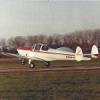Sign in to follow this
Followers
0

SHEAR AND BENDING STRENGTH OF AN BOLTS
Started by
EDMO,
7 posts in this topic
Create an account or sign in to comment
You need to be a member in order to leave a comment
Sign in to follow this
Followers
0